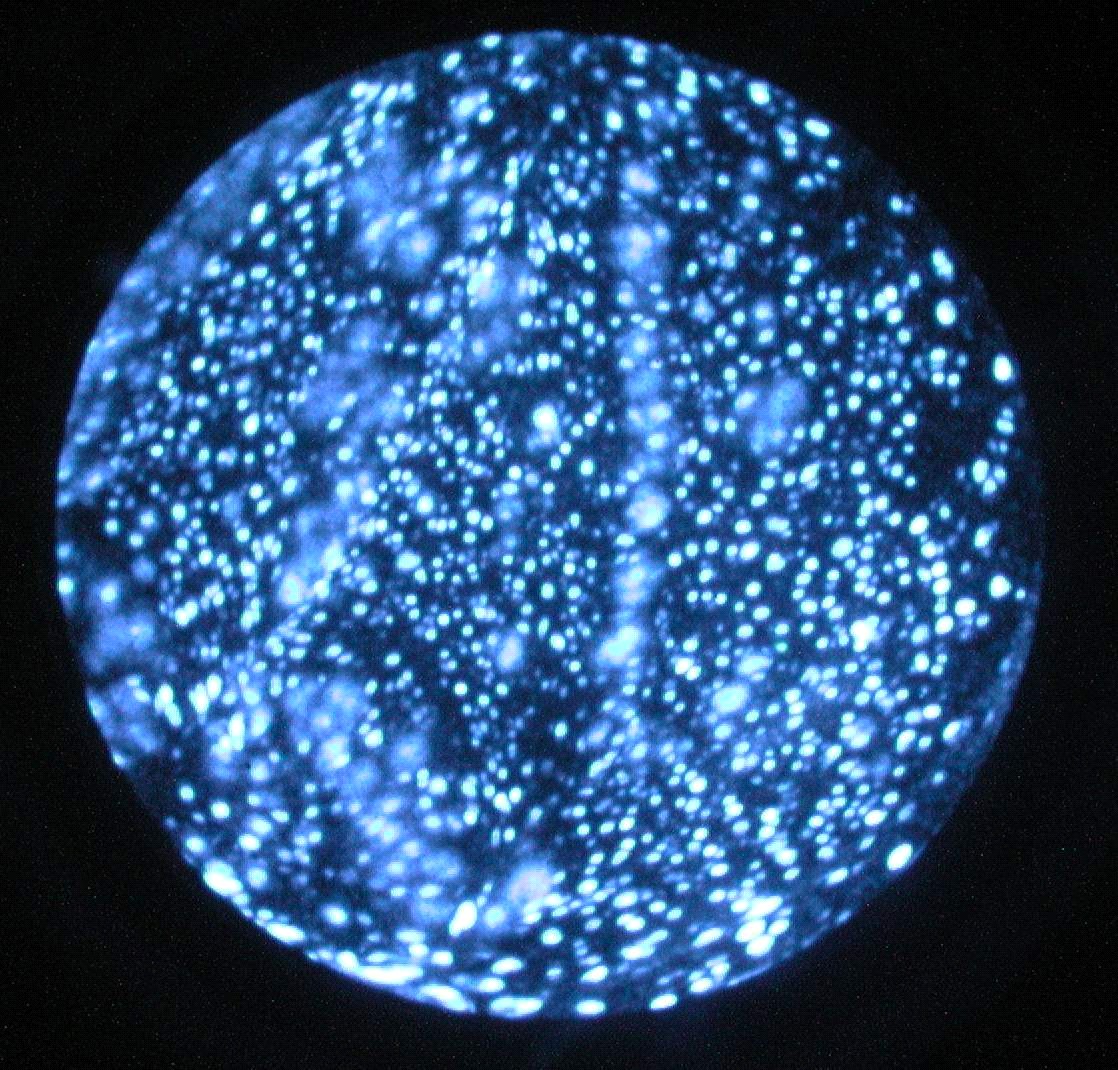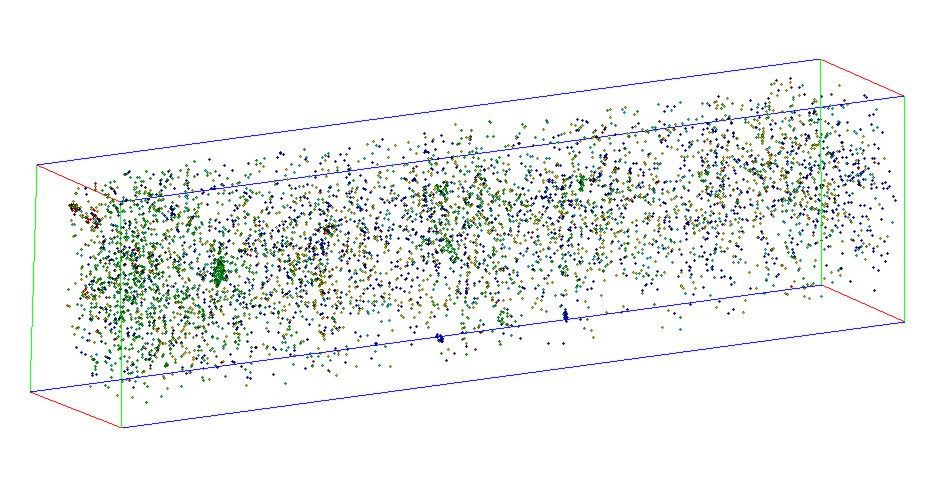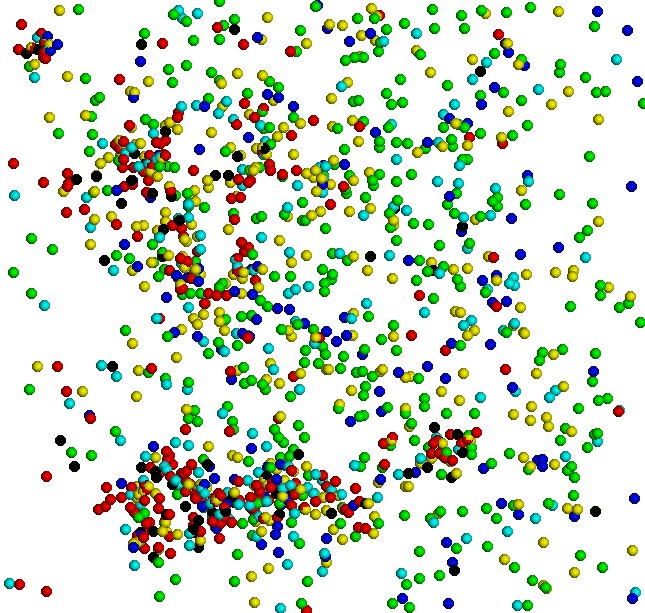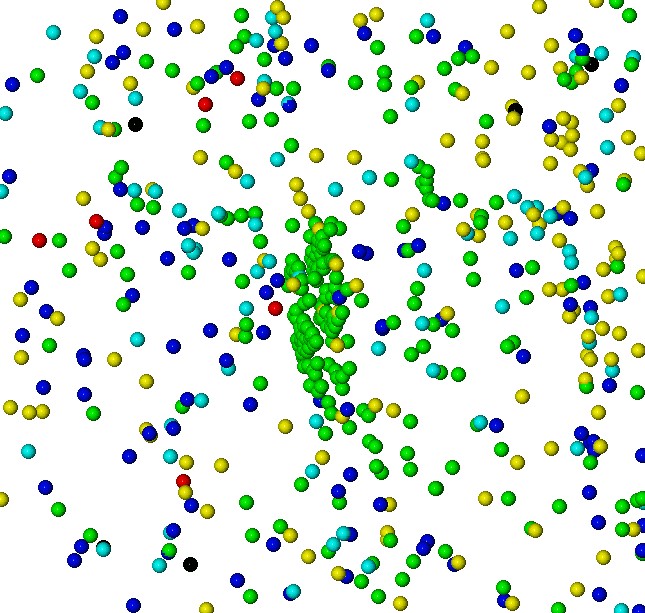The formation of very fine precipitates (typically 1 to 3 nm) labeled as dispersion hardening is one of the most powerful means in strengthening steels. The 3D atom probe brings up an unrivaled atomic level insight into this precipitation phenomena.
Precipitation in a tool steel,
Ne ion image at 40 K, 40 nm Ø area
|
Matrix of a tool steel, 3D reconstruction
of AP data 10 nm Ø area, 200 atomic layers in depth
|
Blow up view of a
primary Precipitate (mainly W and C), ~5nm2 area plotted

|
Blow up view of a
secondary Precipitate (mainly Cr and C), ~5nm2area plotted

|
Collaborations
Institut für Metallkunde und Werkstoffprüfung, Montanuniversität LeobenForschungszentrum für Elektronenemikroskopie, TU Graz
Recent Publication
M. Leisch, “Three-dimensional nanoscale analysis in physical metallurgy”Vacuum 67(2002)435-442